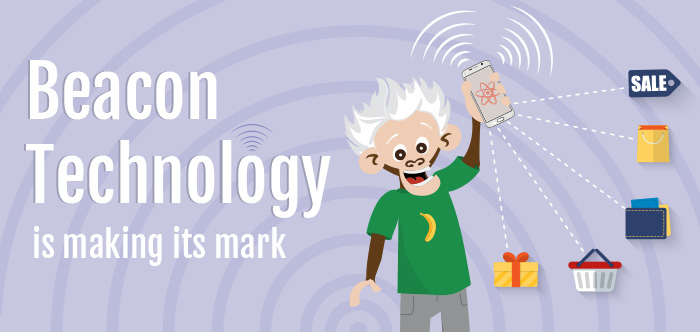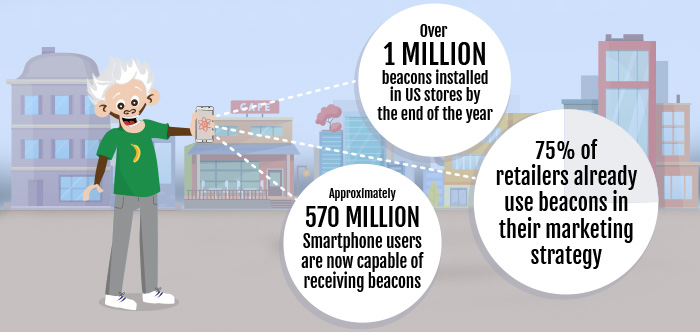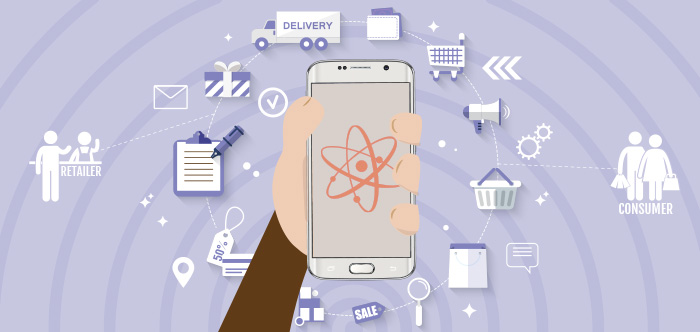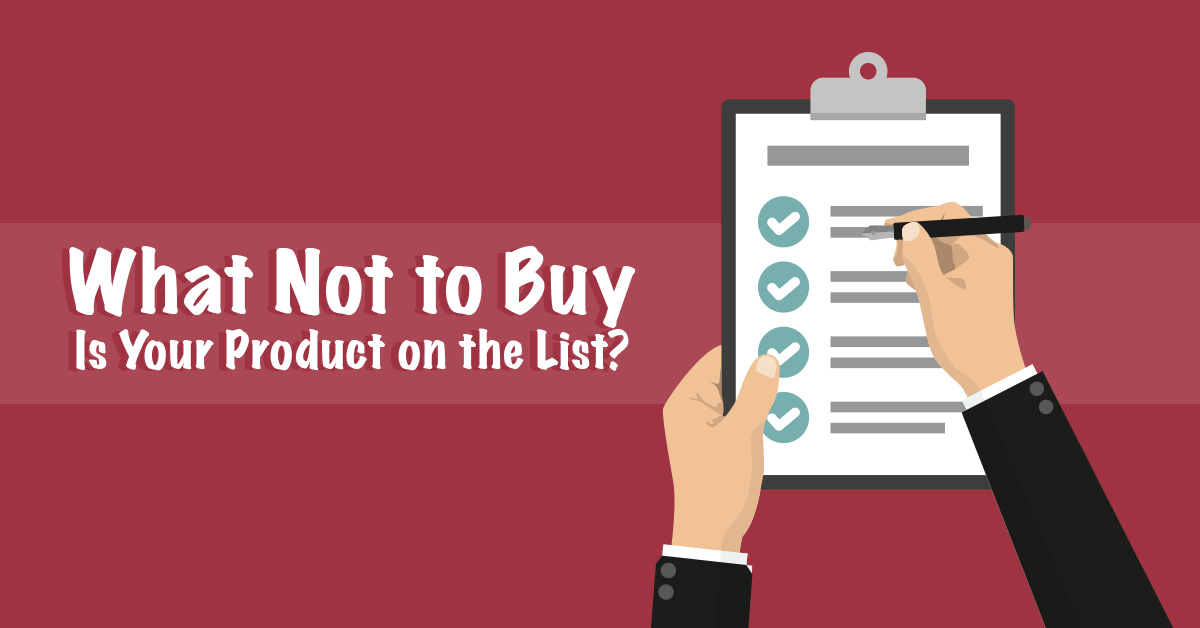
There’s a new, cutting-edge technology that’s changing the face of retail marketing. It’s beacons. Here are a few statistics that may help to emphasize this point:
- By the end of this year alone, it’s expected that there will be over a million beacons installed in stores here in the U.S.
- Over 40 billion queries for beacon-related content are pulled by Android devices from Google Services each year.
- Bluetooth beacons are expected to reach a 133% CAGR (compound annual growth rate) between 2016 and 2021 in advertising, retail and personal tracking.
- There are approximately 570 million users that own Android and Apple smartphones, which are now capable of receiving these beacons.
- 75% of retailers in the United States have already incorporated beacons into their marketing strategy.
- According to forecasts by ABI Research, it is estimated that the overall BLE beacon market will surpass 500 million units by 2021.
- Super-size retailers such as Target and Macy’s report that profits have increased substantially with the use of beacons.

Google is certain that beacon technology will increase exponentially over the next few years. This is why they created the Eddystone and the Google beacon platform. No longer are beacons limited to communicating with a brand’s application; they can now integrate beacons with Google’s products and services.
So, what does all of this mean to consumers? It means that their shopping experiences will become frictionless, with fewer gaps between channels. For retail marketers, it means that they can reach the right person, at the right times with the right message (during their I-want-to-buy-it moments), automatically drawing in customers. In addition, it means that there are new and improved methods of measuring the success of the implementation of such technology.
In order to better understand this up-and-coming applied science, think of the beacons as a lighthouse, which is one of the oldest forms of beaconing. Lighthouses warn approaching boats that the shore is near. They are actual physical landmarks that are sending beacons to mobile devices; not unlike the concept of today’s beacon technology.
Beacons are a way for mobile users to become better aware of their surroundings by giving their smartphones a much better idea of just where they are, and what’s around them. Have you ever been in a hurry, and you need to pay for metered parking? You don’t always have enough quarters, if any, to drop into the meters. With beacon technology, the application to pay for parking knows your exact location, and allows you to pay with the touch of a button on your mobile device. In fact, as your expiration on your parking place grows near, you can receive warning messages, and the opportunity to extend your time.
Nearby Notifications help shoppers to get things done by signaling their smartphones. For instance, users can check to see if the item they want is in a particular store, whether they are outside, or inside, the building. They can even scan the item to read the reviews.
Usually, these types of messages usually depend on other types of location signals. Beacon signals, however, take precision targeting to a whole other level. Retail marketers can benefit by offering brands an advantage in a world where omnichannel shopping has become the new norm. Consumers now want, and expect, instant answers to their questions; especially in those crucial I-want-it-now moments. What a great opportunity to serve future customers, as well as retailers, at the same time.
In the same manner that beacons allow customers to become more aware of their surroundings, they in turn give advertisers a new glimpse into the true-to-life behavior of their customers. The more prevalent beacon marketing becomes, the more that marketers will realize just how much their instore visits are affected by search ads and local ads.
As an example, research by Google indicated that when they ran a randomized control study that included 10 of the largest U.S. big box retailers (such as Target and Bed, Bath & Beyond), they found that on average, the number of store visits driven by mobile search ads outnumbered the number of online purchase conversions. These store visits would not have occurred had they not implemented this beacon technology. This is good evidence of the offline impact that mobile search ads have on the retailers’ bottom lines. The use of beacon technology continues to thrive as improvements in place-detection continue to be enhanced.
Before investing in a beacon infrastructure, a marketer should consider a few things:
What message would you like your consumers to receive?
The approach that is most versatile is to activate beacons that have singular identifiers that are linked to your platform account. You can then take full advantage of notifications to help users interact with your establishment through the Internet or your brand’s application. In addition, you can work with partners whose apps can interact with your venue, greatly improving your visitors’ experience. If it’s just one webpage you want to target, you can broadcast its URL directly from the beacon.
How is the interaction between your venue and your customers?
Your venue’s place marker may be emphasized already in users’ maps. This helps insure that your customers’ smartphones remember that you’ve been there, which improves your company’s online presence.
As always, Genius Monkey is poised at the leading edge of beacon technology. It is our business to be there, and to be aware of the latest innovations that may grow the bottom lines of each of our clients.





